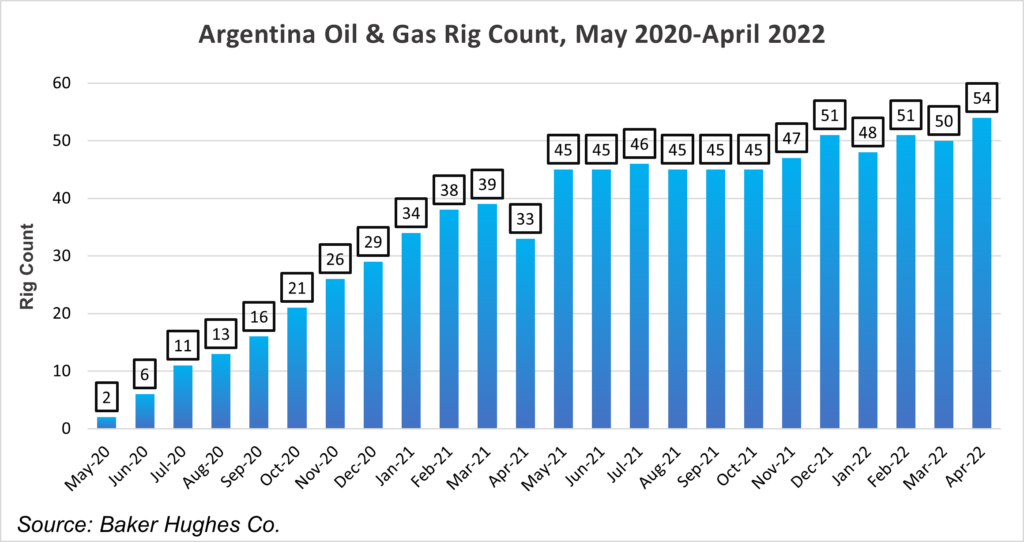US onshore producers may be limiting annual production growth to 5% or less, but don’t tell YPF SA, 51% owned by the Argentine state.
The Vaca Muerta shale play in the Neuquen Basin drove a 16% year-over-year increase in oil and gas production to 506,000 boe/d in the first quarter for the integrated producer.
During a conference call to discuss quarterly results, CEO Sergio Affronti touted “yet another quarter of exceptional growth within our shale operations.”
Natural gas production increased 19.8% year-on-year to 38.1 million cubic meters (MMcm) or approximately 1.35 Bcf/day, while oil production increased 7% to 222 100 bpd.
Production of unconventional oil and natural gas increased by 52% and 140%, respectively, compared to the same period of the previous year.
Shale production nearly doubled year-on-year, accounting for 38% of the company’s total production. Conventional and sealed tanks accounted for 52% and 10% of production respectively. Conventional production decreased by 9% over one year.
Passing the torch?
The rise in production comes against a backdrop of falling production in neighboring Bolivia, which has historically been the main supplier of gas to the southern cone of South America.
“Bolivia is no longer a hub for supply in the Southern Cone,” said Alvaro Rios, managing director of Gas Energy Latin America, on the latest episode of NGI’s Hub and Flow podcast. This role “must be assumed by Argentina”, he explained, citing the country’s huge unconventional reserves and vast infrastructure.
New infrastructure is also needed, in particular to transport Vaca Muerta gas to the Argentine capital, Buenos Aires.
The government’s proposed Néstor Kirchner pipeline is designed to do just that.
YPF Chief Financial Officer Alejandro Lew said the company expects at least part of the first 24 MMcm/d phase of the pipeline to be in service by mid-2023. It will be “probably something in the order of 10 million cubic meters per day of additional transport capacity for gas out of Vaca Muerta” in time for the South American winter of 2023, Lew said.
He noted that state-owned Integración Energética Argentina (Ieasa) is in charge of developing the project, not YPF.
“We hear it’s going relatively well,” Lew said.
He said that although no auction has been announced for transport capacity on the pipeline, “we would expect something similar” to the 2020-2021 Gas Plan bidding process. .
Depending on what is announced, “we will determine our ability to meet any commitments that may be required,” Lew said.
Will YPF develop an LNG Terminal?
Asked about the possible development of a new liquefied natural gas (LNG) export terminal, Lew said: “We are doing our analysis, we believe there is an attractive opportunity for the country and for YPF to go from forward with an LNG processing plant, and this will certainly provide new opportunities to monetize the attractive resources we have, especially in Vaca Muerta, for natural gas to export to global markets.
“But at this stage, it is very difficult to predict a precise timetable for such a project,” he said.
Capex up to 50%
YPF’s capital expenditures totaled $748 million in the first quarter, up more than 50% from a year ago. The company presented a spending plan of 3.7 billion dollars for the year 2022.
Lew highlighted the completion of YPF’s first pilot of simultaneous fracturing, aka simul-frac, at the Loma Campana project in Vaca Muerta. The results were “very encouraging,” Lew said, citing a 28% decrease in completion time and an almost 20% drop in carbon dioxide emissions.
YPF announced average realized prices of $58.90/bbl for oil and $3.10/MMBtu for natural gas, compared to $50.10/bbl and $2.90/MMBtu, respectively, a year ago. a year.
The company completed 38 horizontal wells (31 oil and seven gas) during the quarter, compared to 34 a year ago.
YPF generated free cash flow (FCF) for the eighth consecutive quarter, with a total of $391 million in FCF, the company said.
Downstream home fuel sales were 6% above pre-pandemic levels in 1Q2019, management said, while refinery utilization increased 3% year-on-year to an average of 86% for the quarter . The utilization rate in March averaged 90%.
YPF reported a net profit of 26.4 billion pesos ($224.1 million) in the first quarter, compared to a net loss of 2.25 billion pesos ($19.1 million) in 1Q2021.






More Stories
🌱 Rail In Roanoke Fifth Anniversary + ‘Love Letters’ Production
Industrial production in South Korea contracts by 1.8% in September
PM Modi lays foundation stone for C-295 transport aircraft production plant